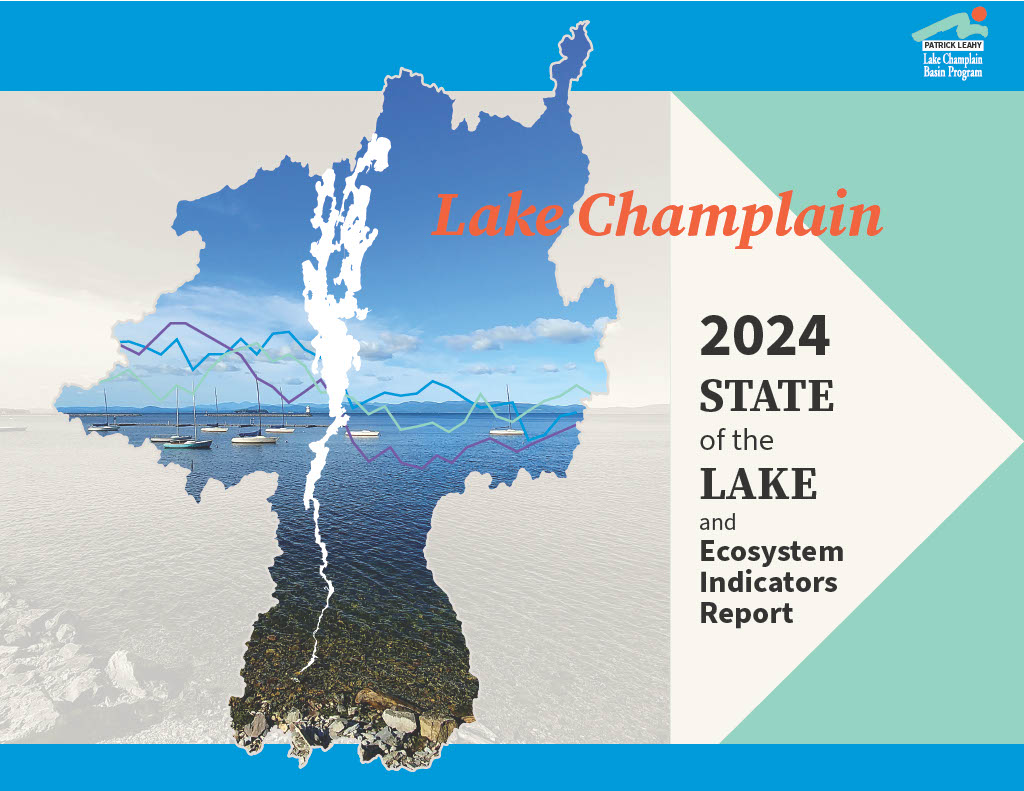The Patrick Leahy Lake Champlain Basin Program (LCBP), a NEIWPCC program partner, released an updated “State of the Lake and Ecosystems Indicators Report.” Drawing on the most recent scientific data, the report provides a comprehensive assessment of the condition of Lake Champlain to be used by resource managers and the public.

Produced every three years, the report documents ongoing challenges and recent successes in the management of the lake’s water quality and ecosystem, which spans Vermont, New York and Quebec. The Ecosystem Indicators Scorecard provides the status and trend for key water quality and ecosystem parameters across the lake’s five major regions: Missisquoi Bay, Northeast Arm, Malletts Bay, Main Lake, and South Lake.
Eric Howe, NEIWPCC program director of the Lake Champlain Basin Program, said, “Sound science and evidence-based management is more important than ever. The 2024 State of the Lake Report provides a timely update on what the data is telling us about our progress and remaining challenges in protecting clean water and habitat in the Lake Champlain basin.”
NEIWPCC Executive Director Susan Sullivan said, “NEIWPCC is excited that the State of the Lake report continues to show the work that NEIWPCC’s Lake Champlain Basin Program and our partners do to support the watershed.”

The 40-page report follows the framework of the LCBP’s management plan, Opportunities for Action, which defines four goals: clean water, healthy ecosystems, informed and involved public, and thriving communities. It is informed by the expertise of dozens of scientific and resource management partners.
The impacts of climate change are among the greatest challenges to Lake Champlain. The report details more frequent and intense rainfall events that increase erosion and nutrient loading to the lake, as well as increased air and water temperatures that contribute to cyanobacteria blooms.
Several positive findings on clean water and ecosystem health are also outlined in the report. These include a downward trend in mercury levels in all monitored sport fish, and no new invasive species have been documented in the lake since 2018. In addition, the report shares detailed maps, scientific data visualizations, educational diagrams, and infographics to support data accessibility and a wide range of uses. The report is available for download online, and French translation will be available in late June. The report and supplemental content are also available online as an interactive StoryMap.